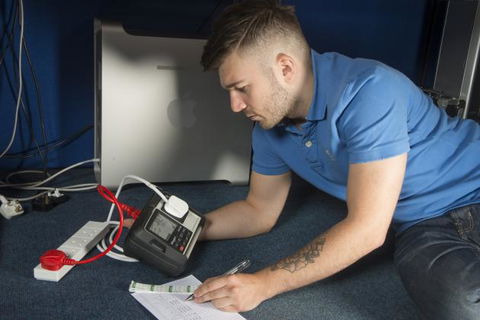If PAT testing is not a major part of your business, but you still get asked for it from time to time, take a look at the new generation of inexpensive, easy-to-use PAT testers, says Megger’s Simon Wood.

If someone asks you to do some PAT testing, you probably won’t want to say no, especially if you’re an electrical contractor and the person asking is an existing customer. Equally, you probably won’t want to spend a lot of money on a PAT tester you’re only going to use occasionally. So what’s the solution?
Until recently there wasn’t one! Buying a PAT tester was a significant investment and, unavoidably, this remains true of testers for high-volume applications. But there’s a new breed of PAT tester that’s been specifically developed as an affordable solution for those who only need to test modest numbers of assets.
The simplest of the new testers don’t even need a mains connection – they’re battery powered and they use the “substitute leakage” method. They have pre-programmed test groups with fixed pass/fail limits for testing Class I and Class II appliances as well as extension and power leads.
These instruments automatically carry out the required tests in the correct sequence, virtually eliminating mistakes. And they give an immediate and clear indication of whether the asset has passed or failed the test. By default, they test insulation at 500 V, but they have a 250 V option for safely testing IT equipment and assets with built-in surge protection.
These simple testers are great for users with limited electrical knowledge but experienced electricians may well prefer a little more flexibility. To meet these requirements, testers with extra functions are available. Although they’re still very keenly priced, these typically include facilities for testing RCDs, mains-powered leakage testing and live-circuit measurements for checking the mains supply and socket polarities.
Just like their simpler counterparts, they use test groups but they also allow continuity, insulation, leakage and SELV equipment tests to be carried out separately. Additionally, users can set their own test group pass/fail limits and test durations.
These testers will meet almost every requirement for low- to medium-volume PAT testing, so why would anyone buy a more costly “high-end” instrument? The answers are speed and convenience.
The simple PAT testers aren’t slow to use but, in high-volume applications where profitability depends on testing the maximum number of assets in the shortest possible time, they can’t compete with their larger counterparts – nor are they intended to.
Also, with the simple testers, test results have to be recorded manually. This is convenient when testing a few assets, but less convenient when testing hundreds. In such cases, professional testers with internal memory for results score every time. Some “big” testers offer even more benefits, such as barcode label printing and scanning so that assets can be recognised instantly when it’s time for retesting.
As usual, you should choose the tester that meets your needs. If you plan to do a lot of PAT testing, you should be thinking of a high-end tester. If, however, you simply want to do a modest number of PAT tests from time to time, one of the new simple testers is the right choice for you.
